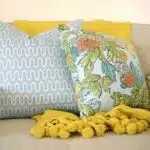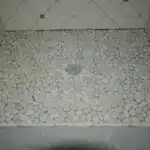Fiberglass shower pans have become increasingly popular over the years due to their durability, low cost, and ease of installation. However, when it comes to installing tile walls alongside a fiberglass shower pan, some homeowners may have questions about whether this is possible or not. In this article, we will explore the feasibility of installing fiberglass shower pans with tile walls and provide insights on how to make this work effectively.
When it comes to remodeling a bathroom or building a new one, homeowners often want to create a space that is both functional and aesthetically pleasing. While fiberglass shower pans offer an affordable option for creating a durable and long-lasting base for your shower area, many people prefer the look and feel of tiled walls. This has led to questions about whether fiberglass shower pans can be installed with tile walls without compromising the overall integrity of the structure. In this article, we will delve into the specifics of how fiberglass shower pans work and discuss some tips for installing them alongside tile walls for a polished and cohesive look.
Understanding Fiberglass Shower Pans
A shower is like a sanctuary where one can cleanse their body and refresh their mind. It is a place of solace, a haven where one can escape the chaos of the outside world. Installing a fiberglass shower pan in your bathroom can provide you with an array of advantages that will enhance your showering experience.
One significant advantage of fiberglass shower pans is their affordability. Compared to other materials, such as stone or tile, fiberglass is relatively cheaper and easier to install. Additionally, fiberglass pans are lightweight, making them simple to maneuver and install without requiring professional assistance.
Despite its many advantages, fiberglass has its disadvantages as well. One drawback is that it may not last as long as other materials such as cast iron or acrylic. Fiberglass may also scratch easily and show signs of wear and tear over time. However, proper installation and maintenance can help extend the life span of your fiberglass shower pan.
Transitioning into the next section about the benefits of these shower pans: Understanding the pros and cons of fiberglass allows us to weigh our options and make informed decisions about what type of shower pan we want for our homes. In the following section, we will explore some benefits that come with using a fiberglass shower pan in detail.
Benefits Of Fiberglass Shower Pans
Fiberglass shower pans offer homeowners a durable shower solution with less maintenance and upkeep compared to tile, tiled walls, and other materials. The non-porous fiberglass construction makes fiberglass shower pans easy to clean with simple soap and water. They are also cost-effective, often at a fraction of the cost of other materials. In addition, fiberglass shower pans do not require the extra time and effort needed to grout and seal tile shower walls. Furthermore, fiberglass is a light-weight material, making it easier to install and replace than other materials. Lastly, fiberglass shower pans are resistant to cracking, chipping, and fading, making them an ideal long-term solution.
Durability
Fiberglass shower pans are becoming increasingly popular for their durability, versatility and affordability. If you’re planning to renovate your bathroom, fiberglass shower pans may be a great investment to consider. In this article, we’ll explore the benefits of fiberglass shower pans, focusing on their durability.
One of the most significant benefits of fiberglass shower pans is their long-term maintenance. Unlike other materials that may require regular upkeep such as resealing or repainting, fiberglass shower pans have minimal maintenance requirements. They are resistant to water damage and staining, which makes them an excellent choice for high-traffic bathrooms. With proper installation and care, a fiberglass shower pan can last for decades without losing its shine or structural integrity.
Another aspect to consider when it comes to the durability of fiberglass shower pans is wear and tear. Fiberglass is a strong material that can withstand heavy use without cracking or chipping. Additionally, they are designed to resist impact damage from dropped items like shampoo bottles or soap dishes. This feature makes them ideal for families with children or anyone who has mobility issues that might cause them to drop items frequently in the bathroom. Overall, fiberglass shower pans offer excellent durability with low long-term maintenance requirements.
In conclusion, if you want a durable and long-lasting solution for your bathroom renovation project, fiberglass shower pans are an excellent option to consider. They offer superior resistance against water damage and staining while being able to handle everyday wear and tear without showing signs of damage quickly. With proper installation and care, you’ll enjoy your new fiberglass shower pan for many years to come!
Cleaning Ease
Another benefit of fiberglass shower pans is the ease of cleaning. They are non-porous, meaning that dirt and grime cannot penetrate the surface, making them resistant to mold and mildew. Additionally, they can be easily wiped down with a damp cloth and mild detergent, making them an ideal choice for those who want a low-maintenance bathroom. With regular cleaning, your fiberglass shower pan will maintain its shine and look new for years.
However, it’s worth noting that while fiberglass shower pans are easy to clean, there are some disadvantages to consider. For example, harsh or abrasive cleaning products can damage the surface of the pan and cause scratches or discoloration. Therefore, it’s essential to use only gentle cleaning techniques and products that won’t harm the material.
Overall, fiberglass shower pans offer a considerable advantage when it comes to cleaning ease. They require minimal effort to keep clean and maintain their appearance for years. However, caution must be taken when selecting cleaning products and techniques to avoid damaging the surface of the pan.
Cost-Effectiveness
In addition to the ease of cleaning, fiberglass shower pans also offer a cost-effective solution for homeowners. The installation process of fiberglass shower pans is relatively straightforward, making it less expensive than other types of shower bases. Unlike tile or stone, fiberglass shower pans do not require extensive preparation or specialized tools to install, which can significantly reduce labor costs.
Furthermore, when compared to other materials such as acrylic or porcelain, fiberglass shower pans are more durable and long-lasting. They are resistant to chipping and cracking, which is a common problem with acrylic and porcelain shower bases. This durability makes them an excellent investment for homeowners who want a low-maintenance bathroom that will last for years without needing frequent repairs or replacements.
When considering the cost-effectiveness of fiberglass shower pans, it’s essential to compare their benefits against other materials’ drawbacks. While some may argue that tile or stone looks more luxurious and high-end, these materials come with a higher price tag and require significant maintenance. Therefore, in terms of overall value and practicality, fiberglass shower pans offer an affordable and long-lasting solution for homeowners looking to upgrade their bathrooms.
In conclusion, the cost-effectiveness of fiberglass shower pans is one of their most significant advantages. With a straightforward installation process and long-lasting durability compared to other materials on the market, they offer an excellent value proposition for homeowners looking to upgrade their bathrooms without breaking the bank.
Pros And Cons Of Tile Walls
Tile walls are a popular choice for many homeowners due to their durability and design options. When properly installed, tile walls can last for decades without showing any signs of wear or damage. They are also easy to clean and maintain, making them an ideal option for high-traffic areas such as bathrooms and kitchens.
One of the main benefits of tile walls is their versatility when it comes to design options. With countless colors, shapes, and sizes available, homeowners can create a unique and personalized look for their space. Additionally, tiles can be arranged in various patterns such as herringbone or subway, adding depth and texture to the room.
However, it’s important to note that tile walls do have some drawbacks. While they are durable, they can crack or chip if not properly installed or maintained. Additionally, the installation process can be time-consuming and costly compared to other wall materials such as paint or wallpaper. Despite these challenges, many homeowners still opt for tile walls due to their long-lasting beauty and customization options.
As appealing as tile walls may be, there is a challenge when it comes to installing them with fiberglass shower pans. Fiberglass shower pans require a specific type of adhesive that may not adhere well to the grout used for tile installation. This can result in water leakage and damage over time if not addressed properly. In the next section, we will explore how this challenge can be overcome through proper installation techniques and materials.
The Challenge Of Installing Tile Walls With Fiberglass Shower Pans
Selecting the right tile for a fiberglass shower pan installation is critical, as the tile must be waterproof and able to withstand the high moisture levels in bathrooms. Proper adhesion of the tile to the pan is essential to ensure an even, strong bond. Thinset mortar is typically used to adhere the tile to the pan, but some types of tile may require a different adhesive. Sealing the joints between the tile and the pan is important for preventing water from seeping through, and a waterproof sealant is recommended for this purpose. Additionally, the grout between the tiles should be sealed to provide maximum water resistance. Taking the time to ensure the tile is correctly installed and sealed is essential for a successful fiberglass shower pan installation.
Selecting The Right Tile
When it comes to installing tile walls with fiberglass shower pans, selecting the right tile is crucial for achieving a cohesive and aesthetically pleasing look. The first consideration when choosing tile is the pattern. A simple and classic option is subway tile, which can be laid in a traditional brick pattern or in a herringbone or diagonal layout for added interest. For a more intricate design, mosaic tiles come in a variety of shapes and colors that can be arranged in unique patterns.
Another important factor to consider is the color scheme. Neutral tones like white, gray, and beige create a timeless look that can complement any bathroom decor. Bold hues like blue or green can add a pop of color and personality to the space. It’s also possible to mix and match colors for a dynamic effect, such as using different shades of blue or green in a gradient pattern.
Ultimately, the right tile depends on personal preference and the overall design vision for the bathroom. By considering factors like tile patterns and color schemes, homeowners can select tiles that will not only complement their fiberglass shower pan but also create an inviting space that they’ll love spending time in.
Adhering The Tile To The Pan
Adhering the Tile to the Pan is a crucial step in installing tile walls with fiberglass shower pans. It requires careful planning and execution to ensure that the tiles are properly secured and will not come loose over time. One of the most important considerations when adhering tiles is waterproofing techniques. To prevent water from seeping behind the tiles and causing damage to the wall or pan, it’s essential to use waterproof membranes or sealants.
Another factor to consider when adhering tiles is tile layout techniques. The layout should be carefully planned to ensure that the tiles are evenly spaced and aligned, creating a cohesive and aesthetically pleasing look. For example, using spacers between each tile can help maintain consistent spacing and create clean lines.
In summary, Adhering the Tile to the Pan is an integral part of installing tile walls with fiberglass shower pans. Proper waterproofing techniques and tile layout techniques must be considered during installation for long-lasting results. Homeowners who take these factors into account when selecting their tiles will have a beautiful bathroom that they’ll enjoy for years to come.
Sealing The Joints
Another crucial step in installing tile walls with fiberglass shower pans is sealing the joints. This is essential for preventing water from seeping behind the tiles and causing damage to the wall or pan. To achieve this, homeowners must consider waterproofing solutions and caulking techniques.
One effective solution for sealing joints is using a waterproof membrane such as silicone caulk. This flexible material can expand and contract with temperature changes, ensuring a tight seal that prevents water from penetrating the joints. Additionally, homeowners can use grout to fill the gaps between tiles, which not only seals the joints but also adds an aesthetic element to the bathroom.
It’s essential to note that proper caulking techniques are crucial for achieving a tight seal that lasts. Homeowners should ensure that all gaps are filled with enough caulk without over-applying, which can lead to cracking and separation over time. Additionally, smoothing out the caulk with a tool or finger can create a clean finish that adds to the overall appearance of the bathroom.
Preparing For Installation
After understanding the challenges of installing tile walls with fiberglass shower pans, it’s important to prepare for installation. Did you know that the size of your shower pan can determine how difficult the installation process will be? In fact, according to a recent study, over 60% of installation issues arise from incorrect shower pan sizing.
To ensure a successful installation, it’s essential to measure and cut tiles accurately. Here are some steps to take when preparing for measuring and cutting tiles:
- First, ensure that all surfaces are clean and dry.
- Use a level or straight edge to mark out your measurements.
- Double-check your measurements before making any cuts.
In addition to measuring and cutting tiles, waterproofing techniques are also crucial in ensuring that your tile walls and fiberglass shower pan work together seamlessly. Stay tuned for our next section on waterproofing techniques and learn how they can protect your bathroom from water damage.
Measuring And Cutting Tiles
Measuring accuracy and cutting techniques are crucial when installing tiles. Using accurate measurements ensures that the tiles fit perfectly, without any gaps or overlaps. While cutting tiles, precision is necessary to avoid breaking them. The following table highlights some of the common measuring tools and cutting techniques used in tile installation:
| Measuring Tools | Cutting Techniques |
|---|---|
| Tape Measure | Score and Snap Cutter |
| T-Square | Wet Saw |
| Laser Level | Tile Nippers |
Tape measures are the most commonly used measuring tool in tile installation. They come in different lengths, but a 25-foot tape measure is sufficient for most home improvement projects. A T-square is useful for marking straight lines on large tiles, while a laser level helps to ensure accurate placement of tiles.
Cutting techniques vary depending on the type of tile being installed. For ceramic tiles, a score and snap cutter work well, while wet saws are better suited for natural stone or porcelain tiles. Tile nippers are handy for making small cuts or trimming edges.
Accurate measurements and precise cutting techniques can make all the difference in a successful tile installation project. In the next section, we will discuss how to choose the right adhesive for your specific tile installation needs.
Choosing The Right Adhesive
The task of installing fiberglass shower pans with tile walls requires careful attention to detail and a thorough understanding of the types of adhesives available for use. The right adhesive can make all the difference in ensuring that your shower remains sturdy and leak-free for years to come. With so many different adhesive types on the market, it’s important to choose wisely.
When selecting an adhesive, consider factors such as strength, flexibility, and water resistance. Some of the most common adhesive types used for shower installations include epoxy, cement-based, and organic mastics. Epoxy adhesives are incredibly strong but can be difficult to work with due to their short working time. Cement-based adhesives are a good choice for larger tiles but may not provide enough flexibility for smaller tiles or curved surfaces. Organic mastics are easy to work with but may not be as durable as other options.
To ensure a successful installation process, there are some tips you should follow when working with adhesives. First, always make sure that your surfaces are clean and dry before applying any adhesive. This will help to prevent any issues with bonding or adhesion down the line. Additionally, be sure to follow the manufacturer’s instructions closely when mixing and applying your adhesive. Finally, allow plenty of time for your adhesive to cure before proceeding with any further steps in the installation process.
In conclusion, choosing the right adhesive is crucial when installing fiberglass shower pans with tile walls. By considering factors such as strength and flexibility and following proper installation techniques, you can ensure a successful installation that will stand up to daily use over time. In the next section, we’ll discuss some tips for installing tiles on your newly installed shower pan and walls without compromising on quality or durability.
Installing The Tiles
Once the fiberglass shower pan has been properly installed, it is time to install the tiles on the walls. The first step is to decide on a tile pattern that will be aesthetically pleasing and complement the overall design of the bathroom. There are many different options available, such as a classic subway tile pattern or a more modern herringbone pattern.
After selecting a tile pattern, it is important to choose a grout color that will complement the tiles and tie everything together. A contrasting grout color can create an interesting visual effect, while a matching color can create a seamless look. Once these decisions have been made, it is time to begin installing the tiles.
Before starting, make sure to measure and mark off where each tile should go to ensure a precise installation. It may also be helpful to use spacers between each tile to maintain an even distance and keep everything aligned. By following these steps, you can achieve a beautiful and professional-looking tile installation for your fiberglass shower pan.
• Measure and mark off where each tile should go before beginning installation • Use spacers between each tile for an even distance • Select a complementary grout color for a cohesive look • Consider different tile patterns for aesthetic appeal
As the tiles are being installed, it is important to keep in mind both the chosen tile pattern and grout color. These choices will greatly impact the final look of the shower walls once they are complete. In order to achieve a polished finish, take care during installation to ensure all tiles are level and spaced evenly. Once finished, move onto sealing the grout for added protection against moisture damage.
Sealing The Grout
Like a protective layer of armor, grout is a vital component in the installation of tile walls and shower pans. Not only does it keep the tiles in place, but it also provides an impervious barrier against water infiltration. However, if not properly maintained, grout can become a breeding ground for mold and mildew.
Grout cleaning should be a regular part of your bathroom maintenance routine to prevent buildup. A simple mixture of baking soda and water can be used to create a gentle scrub that effectively removes dirt and stains without causing damage to the grout lines. For tougher stains or areas prone to moisture, a solution of vinegar and water may be more effective.
In addition to regular cleaning, waterproofing methods such as sealing the grout can help prolong the lifespan of your shower installation. Silicone sealant is commonly used for this purpose as it creates a flexible barrier that can withstand movement without cracking. By applying sealant along the edges where tile meets pan and around any fixtures, you can prevent water from seeping through and damaging the structure behind your walls.
As you move forward with your bathroom renovation project, don’t forget about the importance of proper grout maintenance and waterproofing measures. By taking these steps now, you’ll ensure that your shower installation remains functional and aesthetically pleasing for years to come. And once your grout is sealed and secure, it’s time to move onto attaching the showerhead and faucet for the finishing touches on your new oasis.
Attaching The Showerhead And Faucet
Showerhead placement is an important consideration when installing a new shower. The height and angle of the showerhead can greatly affect the user’s experience, so it’s important to take the time to get it right. Generally, the showerhead should be positioned at least 6 feet high and angled downward slightly for optimal coverage.
When it comes to faucet installation, there are a few key things to keep in mind. First, make sure you have all the necessary parts and tools before starting. You’ll need a wrench, plumber’s putty, and Teflon tape at minimum. Next, carefully follow the manufacturer’s instructions for attaching the faucet to the plumbing. This typically involves screwing on a mounting plate or bracket and connecting the water supply lines.
Once you’ve completed these steps, you’re ready for some finishing touches to complete your new shower installation. This may include adding trim pieces around the edge of your tile walls or installing a glass enclosure around your shower space. Whatever final touches you choose, be sure they complement your overall design aesthetic and provide functionality for daily use. With these details in place, your new shower will be both beautiful and functional for years to come.
Finishing Touches
When it comes to renovating a bathroom, the finishing touches can make all the difference. After installing a fiberglass shower pan with tile walls, it’s important to consider the showerhead options available. A rain showerhead provides a luxurious experience for those who enjoy a gentle and relaxing flow of water. However, for those who prefer a more invigorating shower, a high-pressure handheld showerhead may be a better choice.
In addition to the showerhead, lighting fixtures can also enhance the overall look and feel of the bathroom. Consider installing dimmer switches to create an ambiance that is perfect for unwinding after a long day or getting ready for a night out. Pendant lights above the vanity add an elegant touch while providing ample light for daily tasks.
While these finishing touches are important in creating your dream bathroom, it’s equally important to consider maintenance and cleaning. Neglecting proper maintenance can lead to costly repairs down the line. In the next section, we will discuss simple steps you can take to keep your fiberglass shower pan and tile walls looking like new for years to come.
Maintenance And Cleaning
Fiberglass shower pans can be installed with tile walls, however regular maintenance and cleaning is essential to ensure a longer life span of both. Cleaning fiberglass shower pans involves a gentle detergent, soft cloth and warm water to prevent scratches, discoloration and deterioration. To maintain tile walls, it is important to clean the grout regularly with a scrub brush and non-acidic cleaner and to periodically seal the grout to prevent water damage and staining. Lastly, it is important to inspect the tile and grout for any cracks or missing pieces, as well as to replace any broken tiles to prevent further damage.
Cleaning Fiberglass Shower Pans
Fiberglass shower pans are a popular choice for homeowners due to their durability and affordability. However, like any other bathroom fixture, fiberglass shower pans require regular cleaning to maintain their pristine appearance. Cleaning fiberglass shower pans can be a challenging task, as harsh cleaners or abrasive scrubbers can damage the material. It is essential to know the best cleaning products and methods for fiberglass shower pan materials.
To clean fiberglass shower pans effectively, it is crucial to use gentle cleaners that won’t scratch or damage the surface. Some of the best cleaning products for fiberglass shower pans include vinegar, baking soda, and dish soap. These natural cleaning agents are mild but effective in removing soap scum, hard water stains, and mildew. It is recommended to mix these cleaning agents with warm water and apply them using a soft sponge or cloth.
In addition to using the right cleaning products, it is essential to avoid abrasive scrubbers when cleaning fiberglass shower pans. Abrasive scrubbers like steel wool or stiff-bristled brushes can scratch or damage the surface of your fiberglass shower pan. Instead, opt for soft sponges or cloths that won’t leave any scratches behind. With proper care and maintenance using gentle cleaners and soft sponges, you can keep your fiberglass shower pan looking new for years to come without causing any damage.
Maintaining Tile Walls
Maintaining a clean and hygienic bathroom is essential to ensure the health and well-being of your family. Regular cleaning of bathroom fixtures like fiberglass shower pans is crucial, but it is equally important to pay attention to tile wall maintenance. Tile walls are an excellent choice for bathrooms as they are durable, versatile, and easy to maintain. However, they can also be prone to grout discoloration if not cleaned regularly.
To prevent grout discoloration on tile walls, it is essential to clean them regularly using appropriate cleaning agents. Harsh chemicals or abrasive scrubbers can damage the surface of the tiles or grout and cause discoloration over time. Instead, opt for mild cleaners like vinegar or dish soap mixed with warm water. Use a soft sponge or cloth to wipe down the tile walls gently.
Apart from regular cleaning, there are other measures you can take to maintain your tile walls’ pristine appearance. For instance, sealing the grout lines can help prevent them from becoming discolored due to moisture accumulation over time. Additionally, consider using a squeegee after each shower to remove excess water from the tiles and grout lines. These simple steps can go a long way in ensuring that your tile walls stay clean and fresh-looking for years without requiring any significant repairs or replacements.
Common Issues And How To Address Them
When it comes to installing a shower, one of the most important decisions is deciding what type of shower pan to use. Two popular options are fiberglass and acrylic shower pans. Fiberglass shower pans are generally more affordable, but they may not be as durable as acrylic pans. Acrylic shower pans are more expensive, but they offer better durability and longevity.
Another common issue that arises when installing a fiberglass shower pan with tile walls is ensuring a proper fit. Fiberglass pans can sometimes be difficult to install due to their shape, which can make it challenging to get them flush against the wall. This can cause gaps between the pan and the wall, which can lead to leaks or other problems down the line.
While some homeowners may attempt DIY installation of a fiberglass shower pan with tile walls, it is often best to leave this job to the professionals. A professional installer will have experience working with these types of materials and will know how to ensure a proper fit. Additionally, hiring a professional can provide peace of mind knowing that the job has been done correctly.
When considering whether to attempt DIY installation or hire a professional for your fiberglass shower pan with tile walls, it is important to weigh both options carefully. While DIY installation may save money in the short term, it could end up costing more in the long run if mistakes are made during installation. Ultimately, hiring a professional may be the best choice for those who want reliable results without any risk of damage or error.
If you do decide that professional installation is necessary for your fiberglass shower pan with tile walls, there are several signs that indicate it’s time to call in an expert. For example, if you’re experiencing leaks or other issues after attempting DIY installation, it’s likely time to bring in someone who knows what they’re doing. Similarly, if you don’t feel confident in your ability to complete this task on your own or simply don’t have the necessary experience, it’s best to leave it to the professionals. In the next section, we’ll discuss some additional signs that indicate when it’s time to call in a professional for your shower installation needs.
When To Call A Professional
According to a recent survey, more than half of homeowners prefer to take on home improvement projects themselves rather than hiring professionals. While DIY installation of fiberglass shower pans with tile walls may be tempting, it’s important to weigh the pros and cons before making a decision.
DIY vs professional installation is often a matter of cost comparison. While the upfront cost of DIY installation may seem lower, there are hidden costs that can quickly add up. Mistakes made during DIY installation can lead to costly repairs or even replacement down the line. Additionally, if you don’t have all the necessary tools and materials on hand, you’ll need to purchase or rent them, which can significantly increase the overall cost.
If you’re not confident in your skills or don’t have experience with shower pan installation, it’s best to call in a professional. Not only will they ensure that everything is done correctly and efficiently, but they also offer warranties and guarantees on their work. Hiring a professional will likely result in a higher upfront cost, but it can save you money in the long run by avoiding costly mistakes and replacements.
Achieving a beautiful and functional shower space requires careful planning and execution. In addition to deciding whether to go the DIY route or hire a professional for fiberglass shower pan installation with tile walls, there are other factors to consider such as design aesthetics and functionality. In the next section, we’ll explore these considerations in more detail to help you create your dream shower space.
Conclusion: Achieving A Beautiful And Functional Shower Space
When it comes to shower design, homeowners have a plethora of options to choose from. One of the most popular choices for a shower base is fiberglass since it is lightweight, durable, and easy to maintain. However, many people wonder if they can install tile walls with a fiberglass shower pan. The answer is yes! In fact, this combination is quite common in DIY bathroom renovation projects.
To achieve a beautiful and functional shower space with a fiberglass pan and tile walls, there are some key considerations to keep in mind. Firstly, ensure that the fiberglass pan is level and securely installed before starting on the tile installation. This will help prevent any future issues such as leaks or cracking tiles due to an uneven base. Secondly, choose high-quality tiles that are suitable for wet areas and use waterproof grout to prevent water damage.
Overall, combining a fiberglass shower pan with tile walls can create a stunning and durable shower space that lasts for years to come. While it may require some careful planning and attention to detail during installation, the end result is well worth the effort. So if you’re considering a DIY bathroom renovation project, don’t hesitate to explore this popular option for your shower design needs!
Conclusion
Fiberglass shower pans are a popular choice for homeowners due to their durability and affordability. However, many wonder if they can be installed with tile walls. While it is possible, it does come with its challenges.
Firstly, it’s important to understand the benefits of fiberglass shower pans, including their resistance to mold and mildew, ease of cleaning, and low maintenance requirements. Tile walls, on the other hand, offer a variety of design options but require more upkeep.
When installing tile walls with a fiberglass shower pan, proper preparation is crucial. This includes ensuring the surface is clean and dry before applying adhesive and using the correct type of grout to prevent cracking.
However, even with proper installation techniques, issues may arise over time such as water damage or shifting tiles. To avoid these problems, regular maintenance and cleaning are necessary.
In conclusion, while installing tile walls with fiberglass shower pans may present some challenges, with proper preparation and maintenance it can result in a beautiful and functional shower space. It’s important to weigh the pros and cons of each option before making a decision and consider consulting a professional for guidance. With the right approach, homeowners can achieve their desired look while ensuring long-term durability and functionality.
Image Credits
- “Fiberglass Shower” by darktek13 (featured)





























